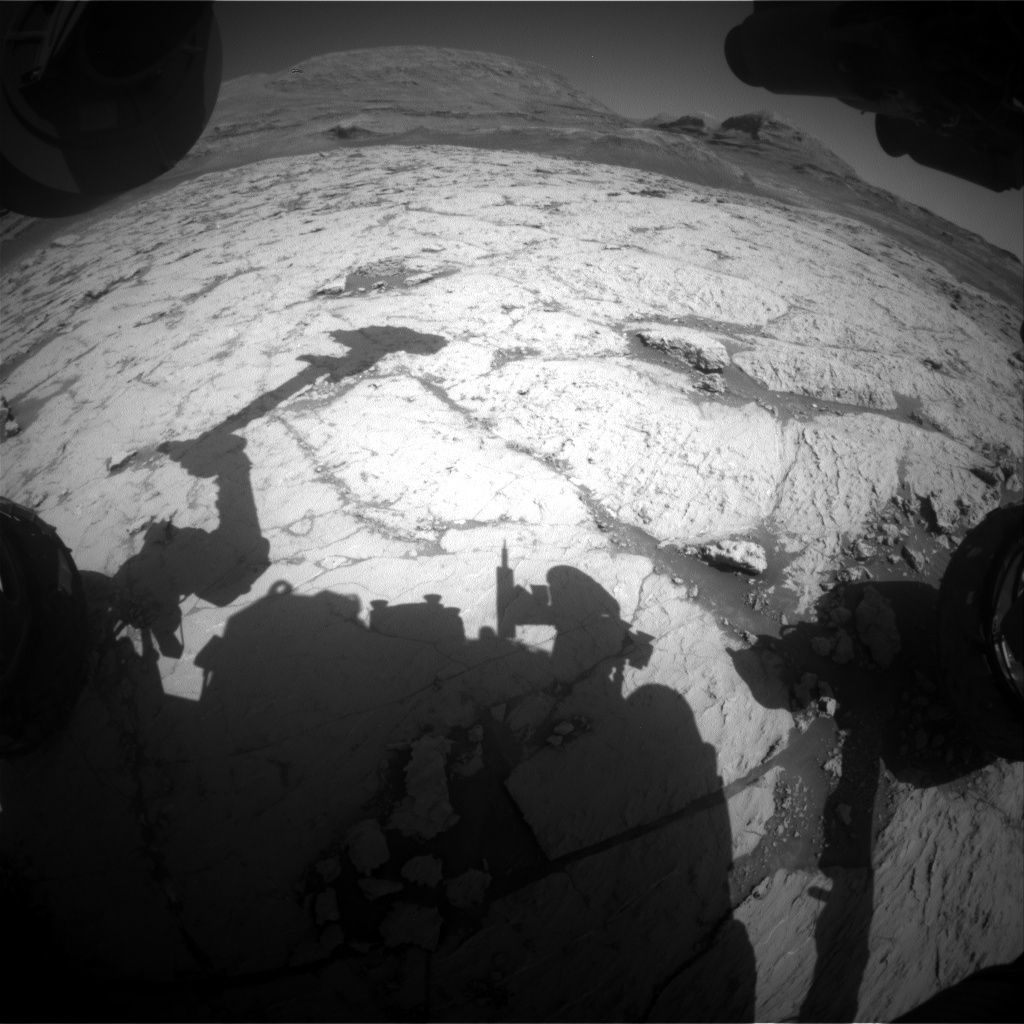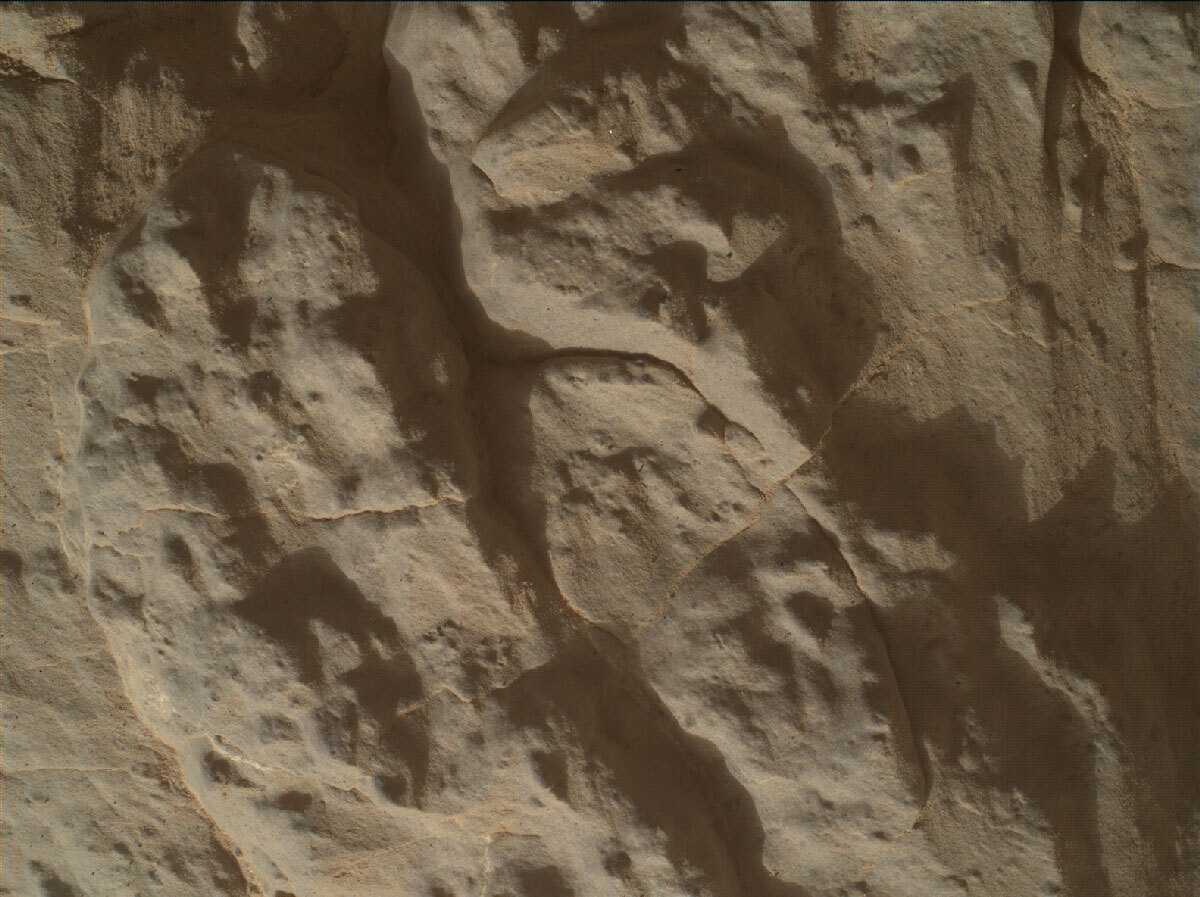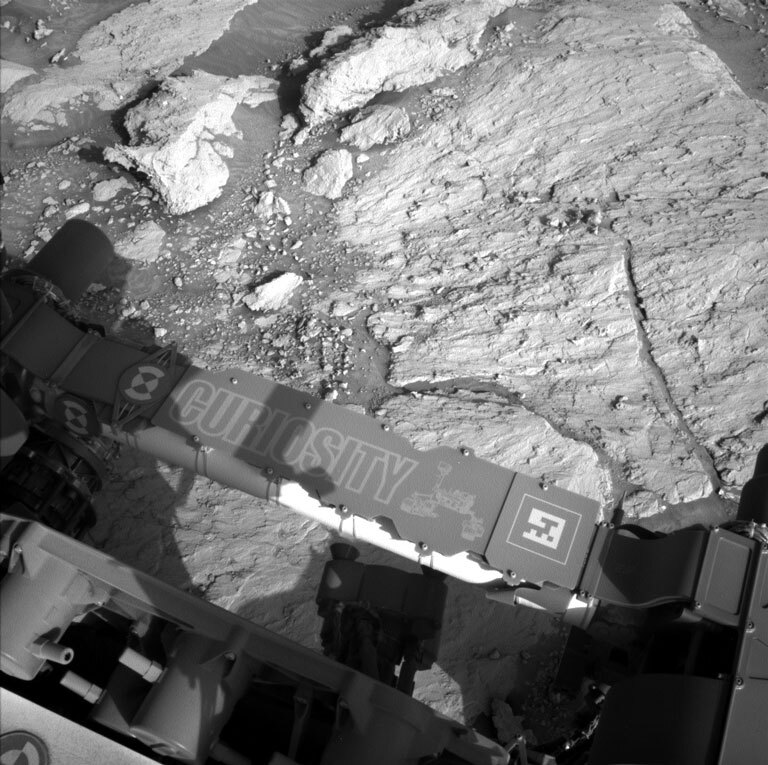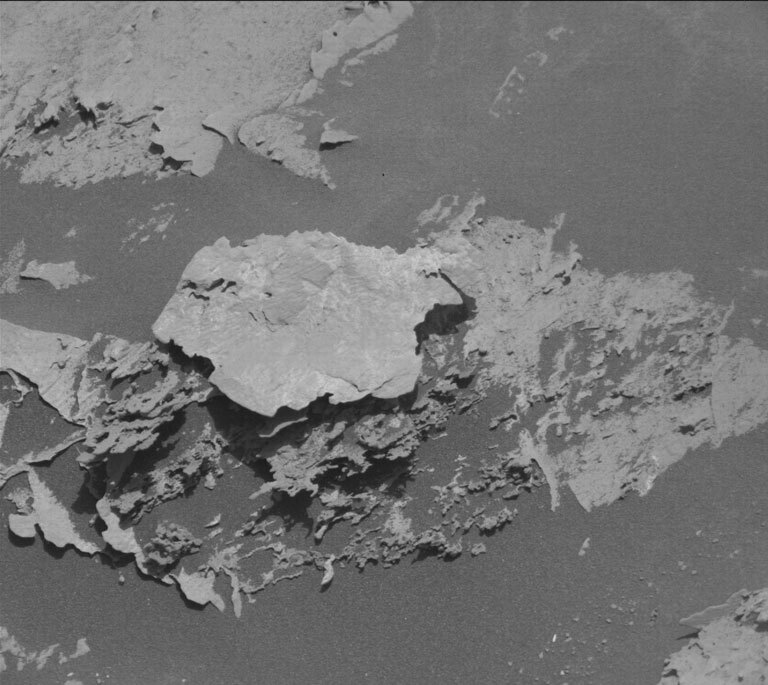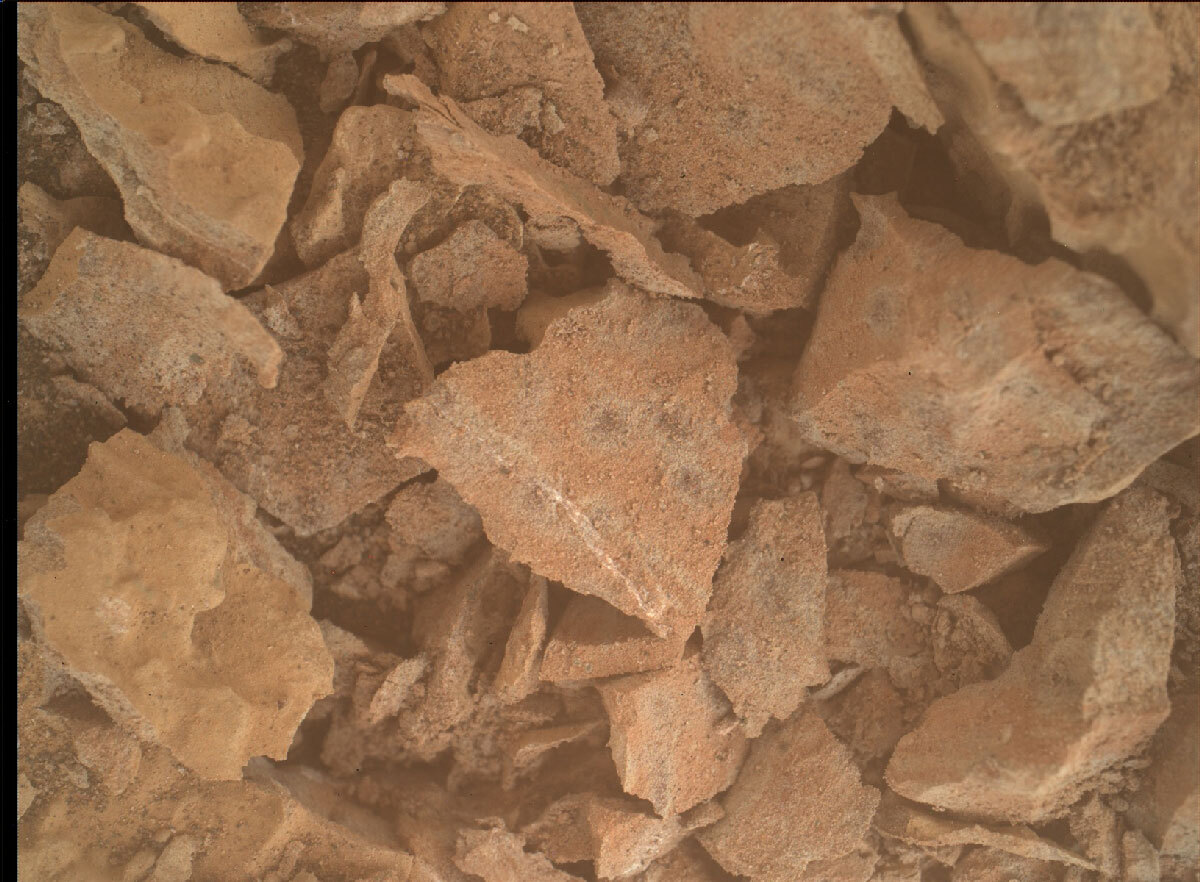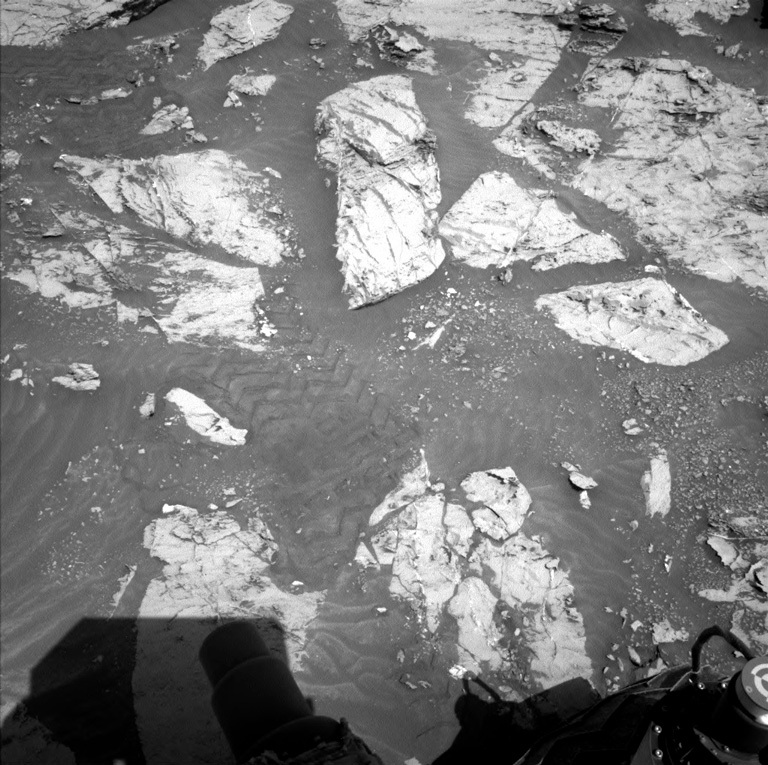May 26, 2021
Sol 3131: Recovering
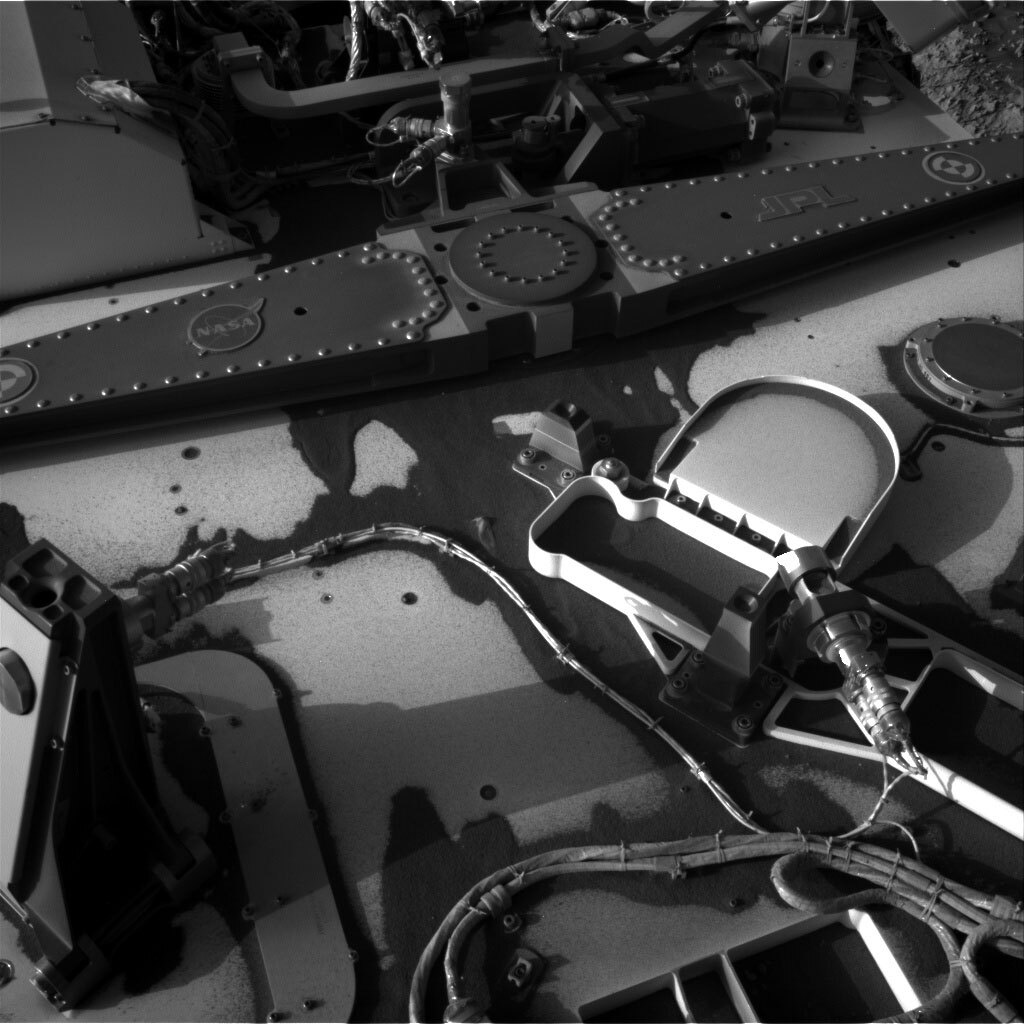
This image was taken by Right Navigation Camera onboard NASA's Mars rover Curiosity on Sol 3128. Credits: NASA/JPL-Caltech. Download image ›
The Sol 3131 plan is focused on recovering from recent anomalies: Engineers need a few additional sols to study the previous hiccup with the remote sensing mast (RSM). In addition, MAHLI's focus mechanism did not completely stow on Sol 3129, so both RSM and MAHLI activities are precluded in favor of diagnostic tests. These preclusions limited the new activities that could be planned today, so the rover will not be as busy as usual on Sol 3131, but we were still able to plan more environmental observations and contact science! During the day, the Front Hazcams will be used repeatedly to search for dust devils.The Navcams are pointed at the rover deck, so will also be used to watch for changes in the distribution of dark sand that was blown up onto the deck by winds. Arm motion is permitted, so after the MAHLI focus motor is driven to its "home" position, the DRT will brush off a bedrock target named "Festalemps" before the APXS is placed on another bedrock target "Villars" for an evening integration. Afterward, the APXS will be placed on the Festalemps brushed spot for an overnight integration. Early on the morning of Sol 3132, RSM diagnostic tests will be performed, at the same time of day that the stall occurred on Sol 3127. Hopefully these diagnostic tests will show that the RSM and MAHLI are healthy and ready for use!

